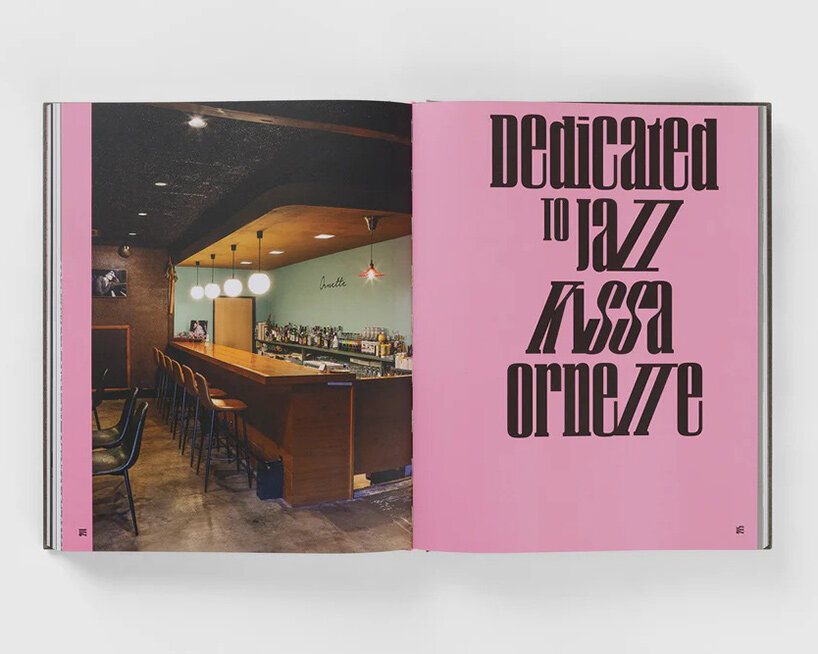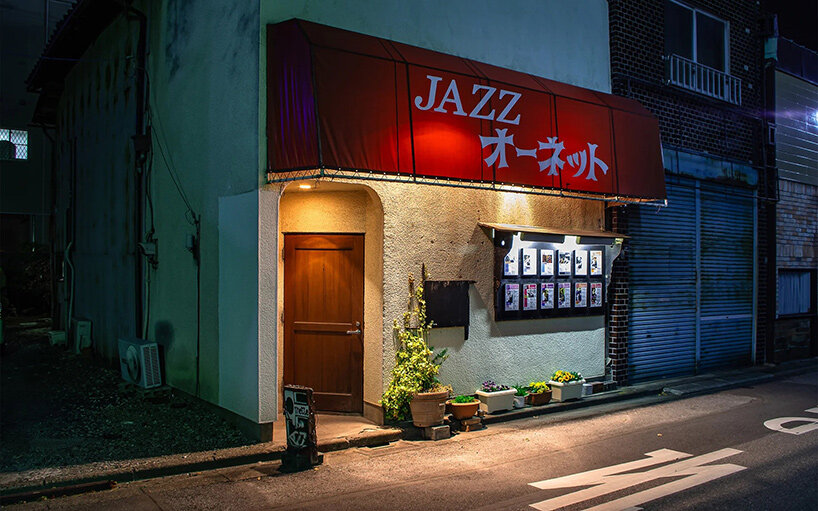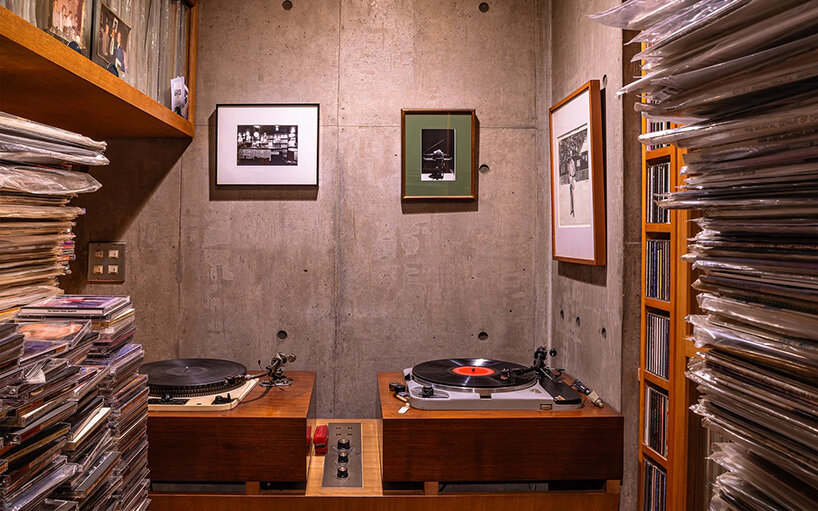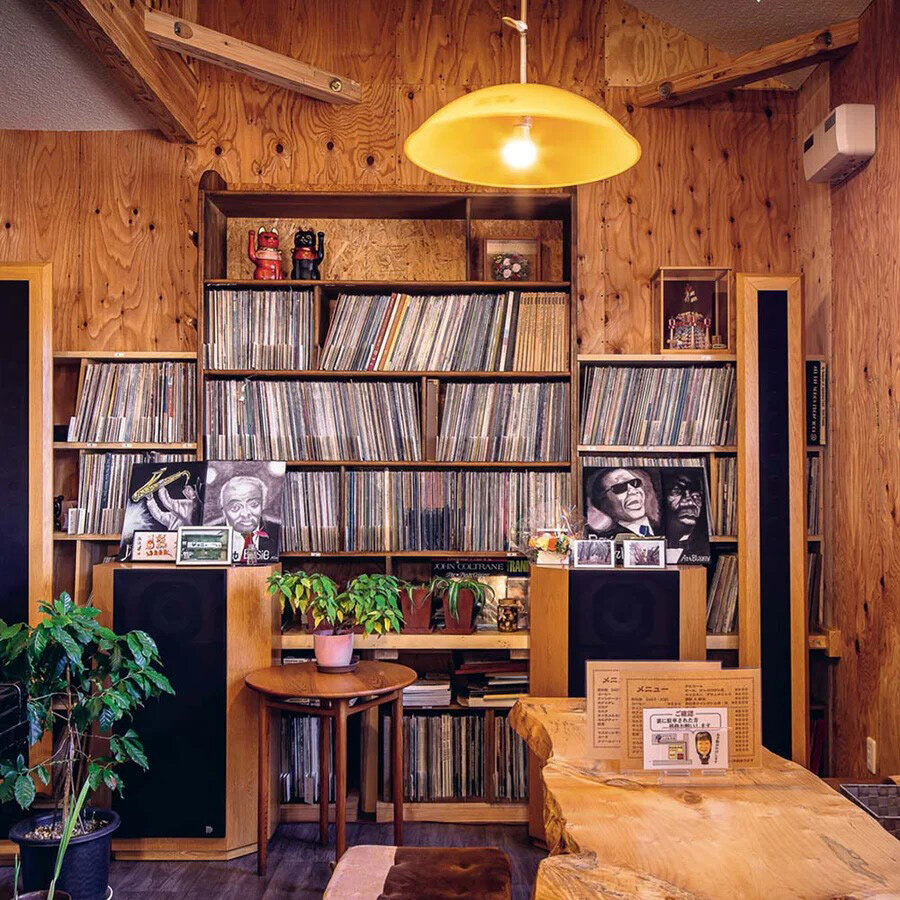Jazz Kissa: The Soul of Japanese Listening Culture
A new book by photographer Katsumasa Kusunose documents the enduring presence of jazz kissa, Japan’s distinctive jazz cafés characterized by intimate interior design for dedicated listening spaces. Titled Jazz Kissa: The Soul of Japanese Listening Culture, the book assembles more than fifteen years of Kusunose’s work, presenting these spaces as both inspiring interiors and cultural archives.
The publication arrives at a moment when interest in high-fidelity environments has reemerged globally (see Isern Serra’s take on the jazz kissa in Barcelona here, or Giorgia Longoni Studio’s in Milan here). Printed on Japanese paper designed to recall the texture of vintage Altec A7 speakers and bound with a traditional obi strip, the book itself embodies the attention to detail that defines the cafés it follows.
‘Kissa’ translates to ‘café’ in Japanese | images courtesy ERG Media
spaces designed for listening
Katsumasa Kusunose’s new book highlights the architectural qualities that distinguish Japan’s jazz kissa from conventional cafés. As documented by the photographer, rooms are often dimly lit, framed by shelves of records and dominated by speaker systems that dictate spatial arrangement. Seating tends to be oriented toward the sound system rather than social interaction. It reflects a design ethos in which architecture, furniture, and acoustics merge into a unified listening experience.
As artist Devon Turnbull writes in the foreword: ‘From the outside, they often appear unassuming, perhaps just a simple roadside cafe in a small town. But the moment you walk through the door, you’re transported into the spirit of the Village Vanguard or Birdland [jazz clubs].’

the book documents the intimate architecture of Japanese jazz kissa
interiors informed by atmosphere and sound
The jazz kissa interiors captured by the Japan-based photographer are deeply personal spaces, shaped by the taste and technical knowledge of their owners. Bars, tables, and booths are often built around large speaker enclosures, tube amplifiers, and reel-to-reel decks, turning equipment into part of the architecture itself. The weight of wood paneling, the patina of tobacco smoke, and the low ceilings contribute to a spatial intimacy that favors absorption in music over casual chatter.
Turnbull notes that each café represents a ‘deeply personal creation, infused with the owner’s distinct sub signature,’ emphasizing how the layering of design decisions produces an atmosphere that is at once idiosyncratic and consistent across the typology.

photographer Katsumasa Kusunose spent over fifteen years capturing these spaces
the cultural significance of the kissa in japan
Jazz kissa emerged in postwar Japan, reaching their height during the 1960s and 1970s. At the time, imported records were scarce, and live performances even rarer. These cafés became sites of cultural transmission, where Japanese musicians and listeners encountered the latest recordings. Kusunose’s book situates them as architectural embodiments of a broader cultural movement, or spaces where design served a social and educational role as much as an aesthetic one.
Although many original cafés have closed, Kusunose’s images also document newer establishments led by younger owners. His work suggests that the template of the jazz kissa (rooms built around listening) will continue to inspire contemporary designers and listeners.

the cafés are designed with sound systems as the focal point of the interior

dim lighting, wood paneling, and record shelves shape their atmosphere




